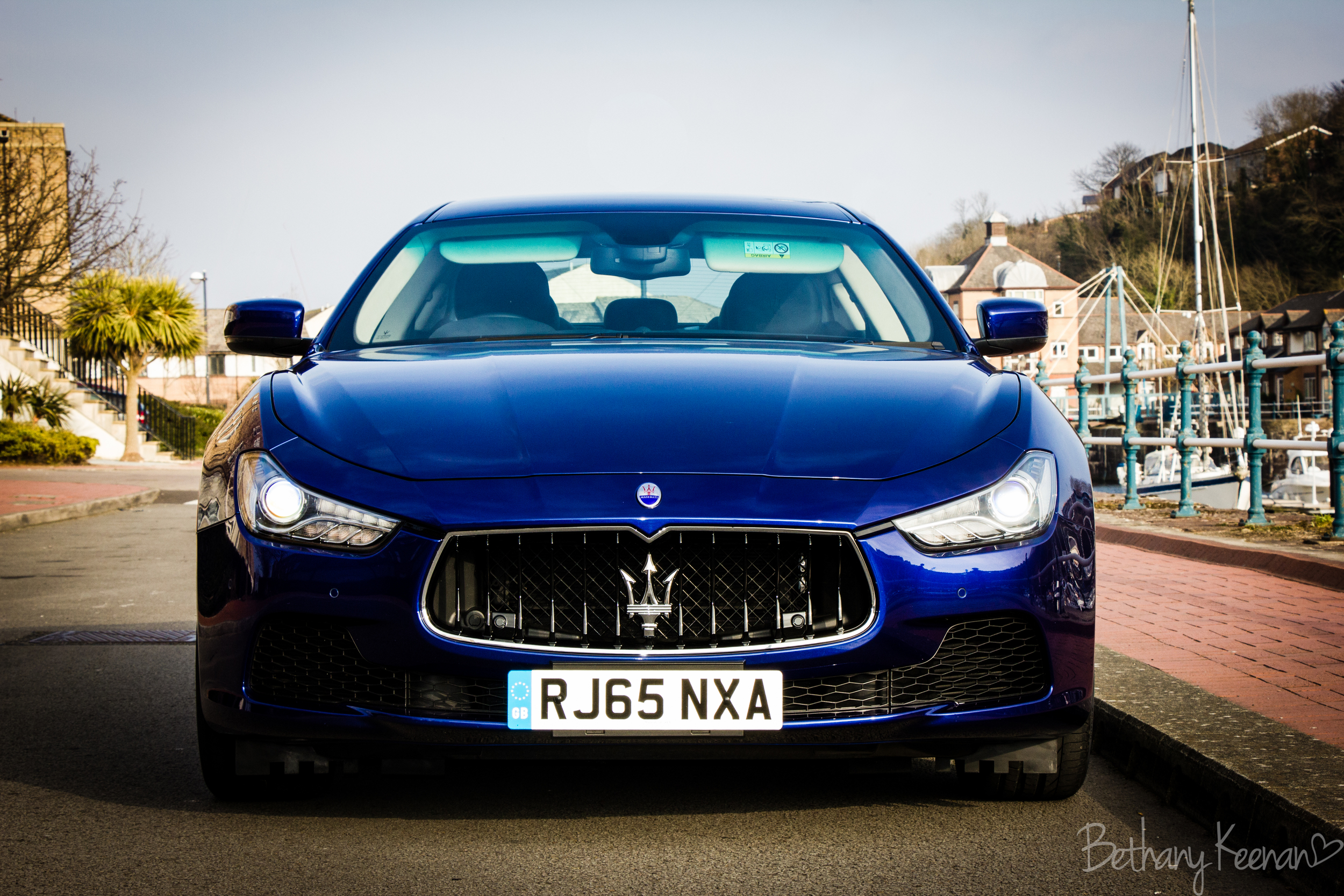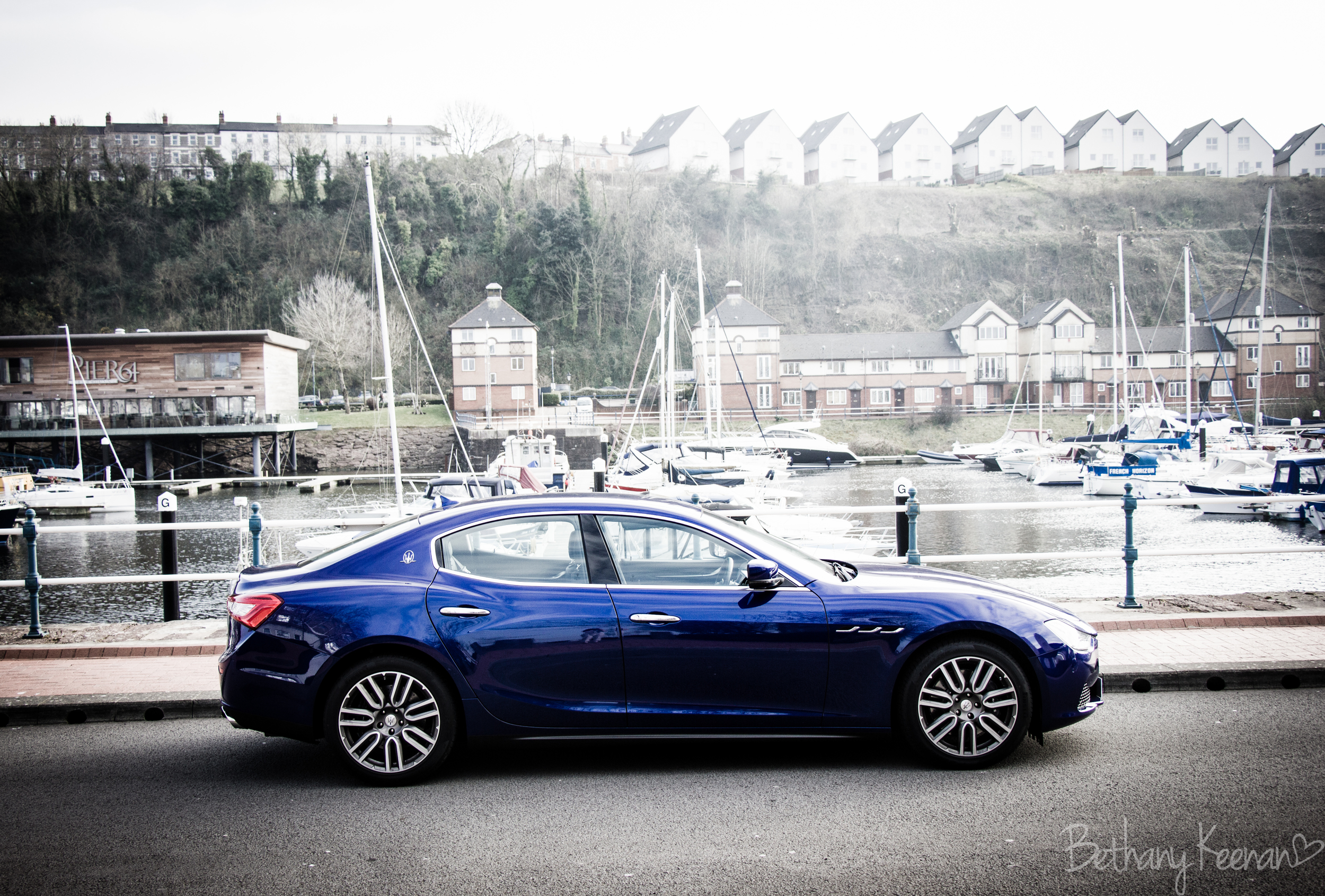With its sporty glamour, aggressive front grille and dominating Maserati badge, the 2016 Ghibli doesn’t have to do much to capture your attention.
The Ghibli was first launched at the Turin motor show in 1966 as a two-seater coupé. It has since transformed to a luxury executive four-door sedan - a smaller and less expensive version of the Maserati Quattroporte.
Maserati’s are renowned for being exclusive and expensive. Yet, surprisingly the Ghibli is reasonably priced (as far as owning a Maserati goes!). The entry-level 274bhp Ghibli diesel starts at just £48,925, while the 330bhp Ghibli is £52,885, increasing to £63,805 for those wanting the sportier model, 410bhp Ghibli S. All three versions use the same eight-speed, ZF automatic transmission with identical gear ratios – making it effortless to make the most of the power in either automatic or manual mode. Although, typically rear-wheel drive, there is also the option of a four-wheel-drive transmission called the Ghibli S Q4 but this is currently not available in the UK.
Interestingly, Maserati have opted to keep the same markings for both petrol and diesel models, with no additional ‘d badge’ on the engine or at the rear to indicate a diesel car. The cars on test were the 3.0 V6 Ghibli in Blue Emozione with black leather interior and the Ghibli diesel in Grigrio with red leather…but should Maserati be making a diesel version Ghibli and do the Italians have the edge over their German competitors?
From the outside, the nose is long and low and the sharp LED headlamps wrap-around the car. The aluminium multi-spoke wheels are simply gorgeous, especially if you opt for the red brake callipers. Inside, the soft-leather Italian seats were supremely comfortable and I found the car wrapped around me and it didn’t feel as big as it first appeared from the outside.
The leather-covered steering wheel is not cluttered with controls and just has audio and cruise controls to the left and right of the Trident symbol. Large manual-shift paddles sit behind the wheel, with only one stork on the left (for indicating, windscreen washers etc). This baffled me at first but once you’ve driven a Maserati, you’ll find yourself wondering why all cars don’t just have one!
To the right of the gear-shift lever you’ll find the sport mode button (my favourite!). This causes the by-pass valves and the exhaust to stay open and you can hear these delightful and distinct turbo huffs from the exhaust - adding to the fun and excitement of driving a Maserati.
Acceleration from 0-62mph was 5.6 seconds in the petrol Ghibli with a maximum speed of 163mph. There was slight turbo lag from standstill but once warmed up, the performance and handling through the city and country lanes was effortless. Brakes were appropriately responsive and the ride was comfortable.
By comparison, the Ghibli diesel accelerates 0-62mph in 6.2 seconds with a maximum speed of 155mph. This is largely due to the lower power (274bhp compared to 330bhp) and additional weight of the diesel model (1835kg compared to 1810kg). Whilst Maserati have upped the torque of the diesel version to account for the loss of power, I personally felt it took away from the overall driving experience. The turbodiesel didn’t quite sound the same as the petrol version and whilst (from the outside) it looks like the Ghibli, it very much feels like a diesel to drive. That being said it was still a great car that has the advantage of being more fuel-efficient than its counterpart.
Overall, we achieved a fuel consumption of well over 30mpg in the petrol and 40mpg in the diesel…not bad when we were driving it hard and having fun!
So what makes the Ghibli unique? Well, it’s easy to forget that the Ghibli is not a sports car but a saloon car with a sporty edge. It therefore looks and performs like a sports car but is comfortable to drive long distances or along broken roads.
Ghibli’s V6 engines are designed by Maserati but built by Ferrari, further adding to its Italian charm. The most distinctive feature, however, is the traditional blue oval faced clock, which sits directly above the 8.4” touch control display.
With rivals such as Audi, Mercedes and BMW, the Ghibli is an interesting and unique alternative to other models in the luxury midsize sedan market. Both models exude badge appeal and you are sure to be noticed if you rock up to work in a Ghibli. The diesel version allows for a fun and efficient car that is well built, balanced and grips the road well, but I can’t help but wonder why Maserati shy away from promoting the fact it’s a diesel…
For: It’s a Maserati! Supreme Italian styling with badge appeal, Cheapest in the Maserati range, Vast boot space.
Against: Fuel economy, not as fast as its rivals.
© Bethany Keenan (Words and Images)
























